Ditapis dengan
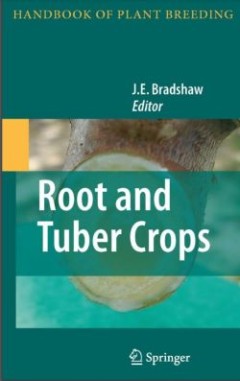
Root and Tuber Crops
It is important to include Tuber and Root Crops in the Handbook of Plant Breeding. They include starchy staple crops that are of increasing importance for global food security and relief of poverty, important millennium goals for the United Nations. Indeed, 2008 was the UN International Year of the Potato in recognition of this role of the potato as the world’s third most important food crop …
- Edisi
- -
- ISBN/ISSN
- 978-0-387-92765-7
- Deskripsi Fisik
- 310 hlm.
- Judul Seri
- Handbook of Plant Breeding 7
- No. Panggil
- -

An Encyclopedia of Small Fruit
An A-to-Z look at the world of small fruits While there are many books on small fruit culture, their focus is often very specific or confined to just a few species. Packed with useful information, An Encyclopedia of Small Fruit is the comprehensive A-to-Z reference that not only details all temperate and tropical small fruit grown throughout the world, but also provides a description and cultur…
- Edisi
- -
- ISBN/ISSN
- 978-1-56022-939-1
- Deskripsi Fisik
- 153 hlm.
- Judul Seri
- -
- No. Panggil
- -
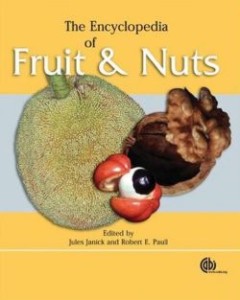
The Encyclopedia of Fruit and Nuts
Intended for all your research needs, this encyclopedia is a comprehensive collection of information on temperate and tropical fruit and nut crops. Entries are grouped alphabetically by family and then by species, making it easy to find the information you need. Coverage includes palms and cacti as well as vegetable fruits of Solanaceae and Curcurbitacea. This book not only deals with the horti…
- Edisi
- -
- ISBN/ISSN
- 978-0-85199-638-7
- Deskripsi Fisik
- 993 hlm.
- Judul Seri
- -
- No. Panggil
- -
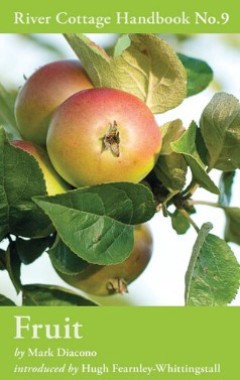
Fruit
Growing fruit at home is a delicious and altogether more enjoyable alternative to buying it in the shops. Mark Diacono offers a practical and accessible guide to making the most of your garden and what it has to offer. The first part of the book is an A-Z of the different varieties of fruit, with old favourites like apples, cherries, plums, blackcurrants, white currants, redcurrants, strawber…
- Edisi
- -
- ISBN/ISSN
- 978-1-40889633-4
- Deskripsi Fisik
- 354 hlm.
- Judul Seri
- River Cottage Handbook No.9
- No. Panggil
- -

The Home Orchard Handbook: A Complete Guide to Growing Your Own Fruit Trees A…
Crisp apples, tart lemons, lush figs, tender peaches—imagine the bounty of a late-summer farmer’s market, right in your backyard! Learning how to plant and care for fruit trees is a desirable, accessible activity for a wide range of people. It’s a natural extension of many gardeners’ repertoires, and the investment yields generations of results. Growing your own fruit ensures a fresh, d…
- Edisi
- -
- ISBN/ISSN
- 978-1592537129
- Deskripsi Fisik
- 493 hlm.
- Judul Seri
- -
- No. Panggil
- -
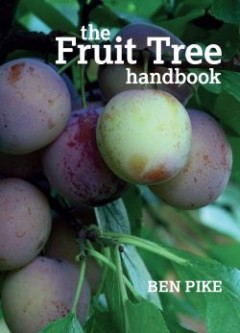
The Fruit Tree Handbook
The Fruit Tree Handbook is a clear, practical guide for both amateur and expert, conveying a deep respect for the natural world and showing how to cultivate healthy trees through good management. Apples, pears, plums, cherries, apricots, peaches and nectarines, as well as less common fruits such as mulberries, medlars and figs, are covered in detail, with recommended varieties of each. The Frui…
- Edisi
- -
- ISBN/ISSN
- 978-1-900322-74-4
- Deskripsi Fisik
- 353 hlm.
- Judul Seri
- -
- No. Panggil
- -
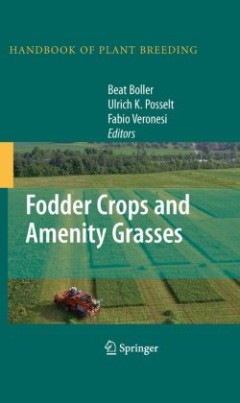
Fodder Crops and Amenity Grasses
Grassland farming in Europe was already established during the settlement of the rst farmers together with their domesticated animals after the last ice age. Since then, grassland provides the forage basis to feed ruminant animals for the p- duction of meat and milk. Depending on the ecological conditions and intensity of usage, various plant communities with different species developed, displa…
- Edisi
- -
- ISBN/ISSN
- 978-1-4419-0760-8
- Deskripsi Fisik
- 526 hlm.
- Judul Seri
- Handbook of Plant Breeding 5
- No. Panggil
- -
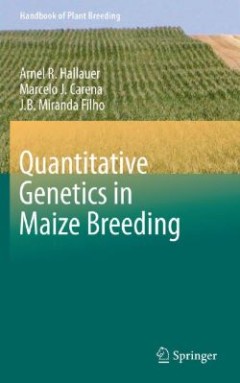
Quantitative Genetics in Maize Breeding
Quantitative Genetics in Maize Breeding Public investment in maize breeding from 1865 to 1996 was $3 billion (Crosbie et al., 2004) and the return on investment was $260 billion as a consequence of applied maize breeding, even without full understanding of the genetic basis of heterosis. Quantitative genetics has allowed the integration of prebreeding with cultivar development by characterizing…
- Edisi
- -
- ISBN/ISSN
- 978-1-4419-0766-0
- Deskripsi Fisik
- 680 hlm.
- Judul Seri
- Handbook of Plant Breeding 6
- No. Panggil
- -
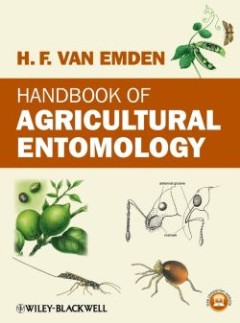
Handbook of Agricultural Entomology
Handbook of Agricultural Entomology by Helmut van Emden is a landmark publication for students and practitioners of entomology applied to agriculture and horticulture. It can be used as a reference and as a general textbook. The book opens with a general introduction to entomology and includes coverage of the major insects (and mites) that cause harm to crops, livestock and humans. The importa…
- Edisi
- -
- ISBN/ISSN
- 978-1-118-46959-0
- Deskripsi Fisik
- 331 hlm.
- Judul Seri
- -
- No. Panggil
- -
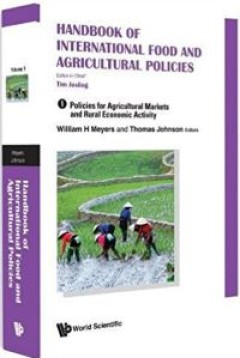
Handbook of International Food and Agricultural Policies I: Policies for Agri…
Handbook of International Food and Agricultural Policies is a three-volume set that aims to provide an accessible reference for those interested in the aims and implementation of food and farm policies throughout the world. The treatment is authoritative, comprehensive and forward looking. The three volumes combine scholarship and pragmatism, relating academic writing to real-world issues faced…
- Edisi
- -
- ISBN/ISSN
- 978-9-813-22628-9
- Deskripsi Fisik
- 1210 hlm.
- Judul Seri
- -
- No. Panggil
- -
 Karya Umum
Karya Umum  Filsafat
Filsafat  Agama
Agama  Ilmu-ilmu Sosial
Ilmu-ilmu Sosial  Bahasa
Bahasa  Ilmu-ilmu Murni
Ilmu-ilmu Murni  Ilmu-ilmu Terapan
Ilmu-ilmu Terapan  Kesenian, Hiburan, dan Olahraga
Kesenian, Hiburan, dan Olahraga  Kesusastraan
Kesusastraan  Geografi dan Sejarah
Geografi dan Sejarah